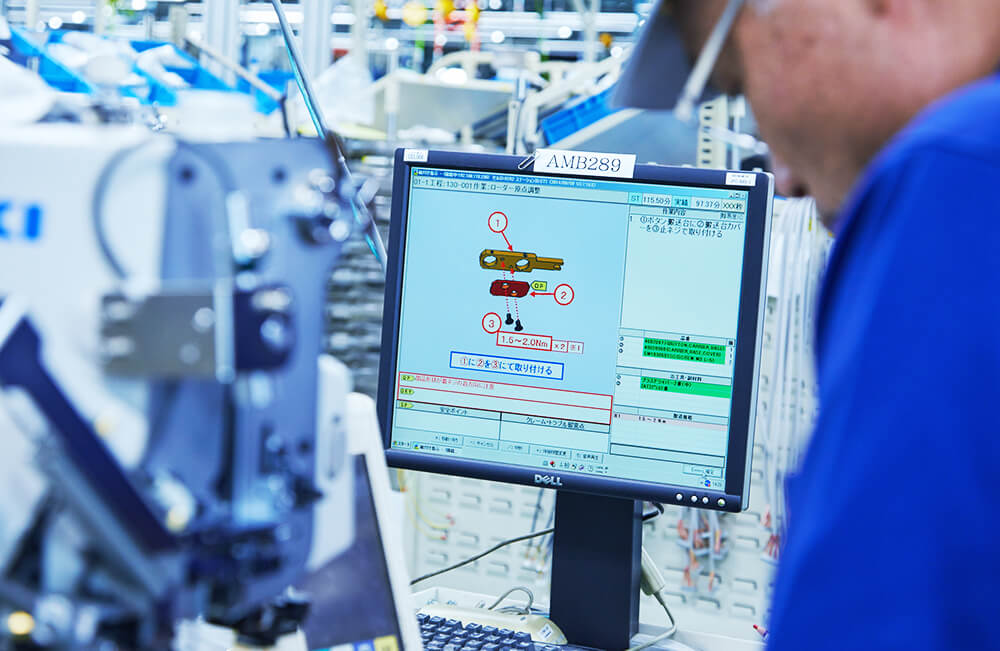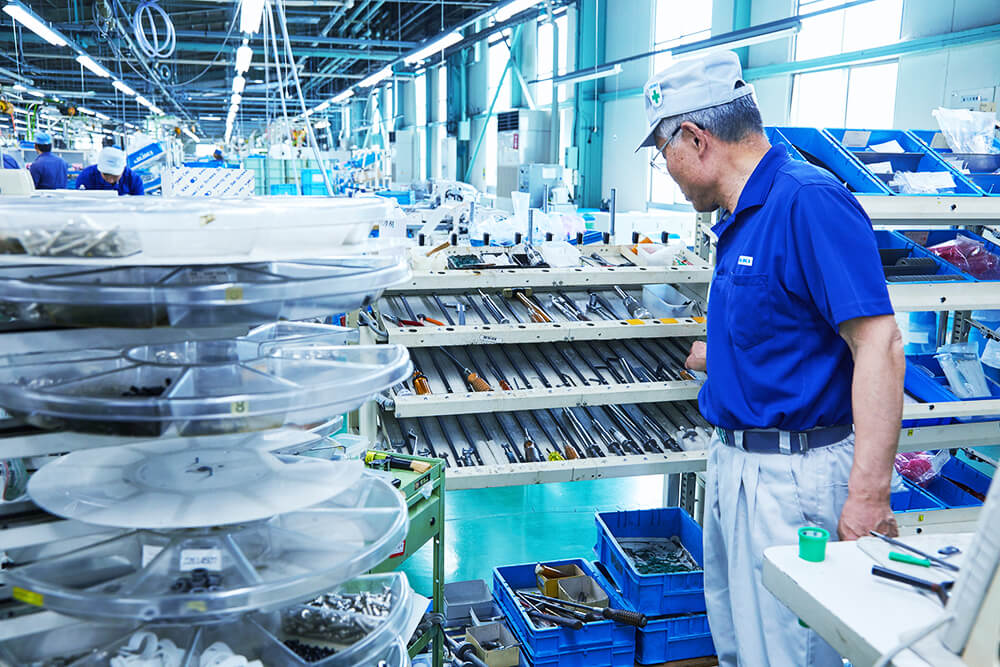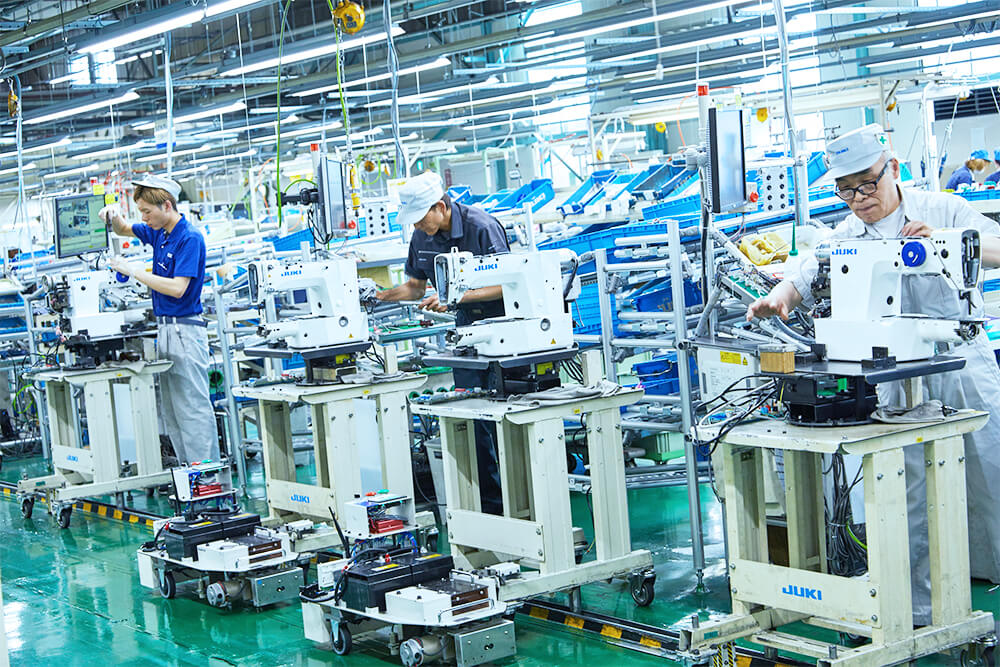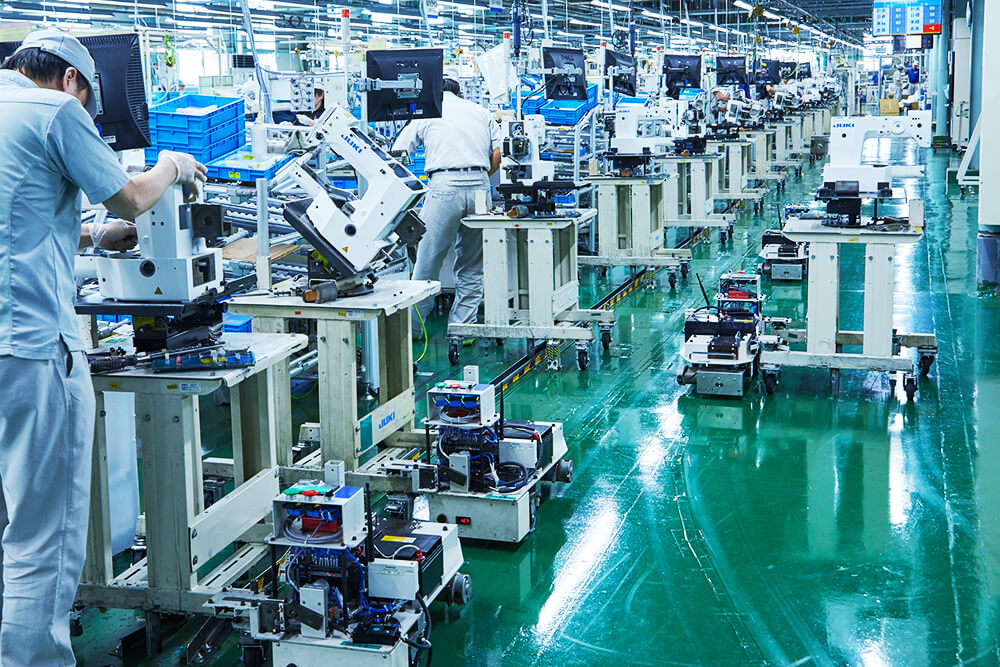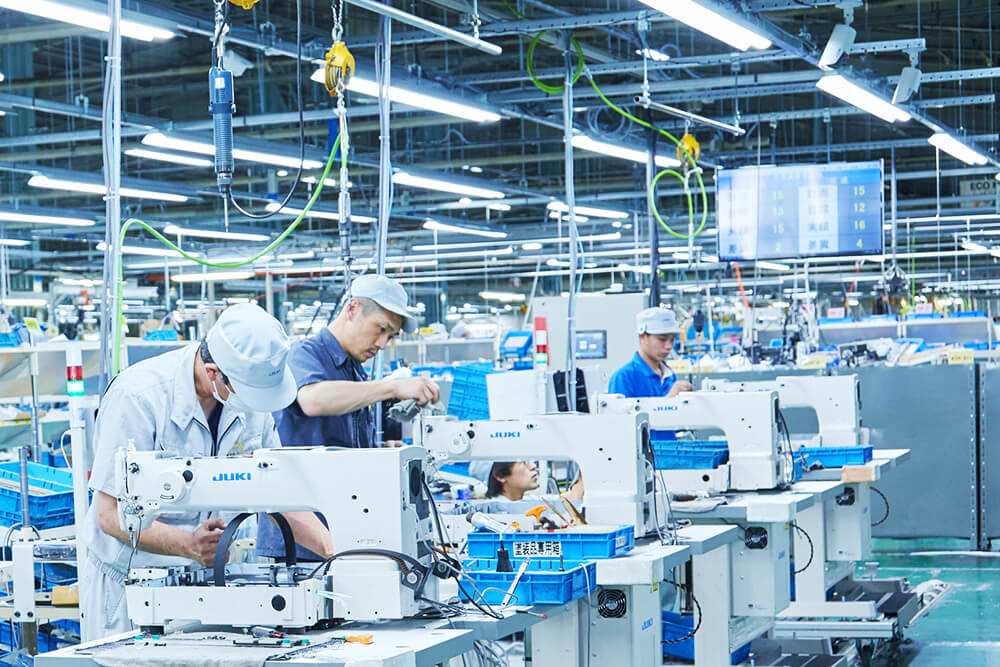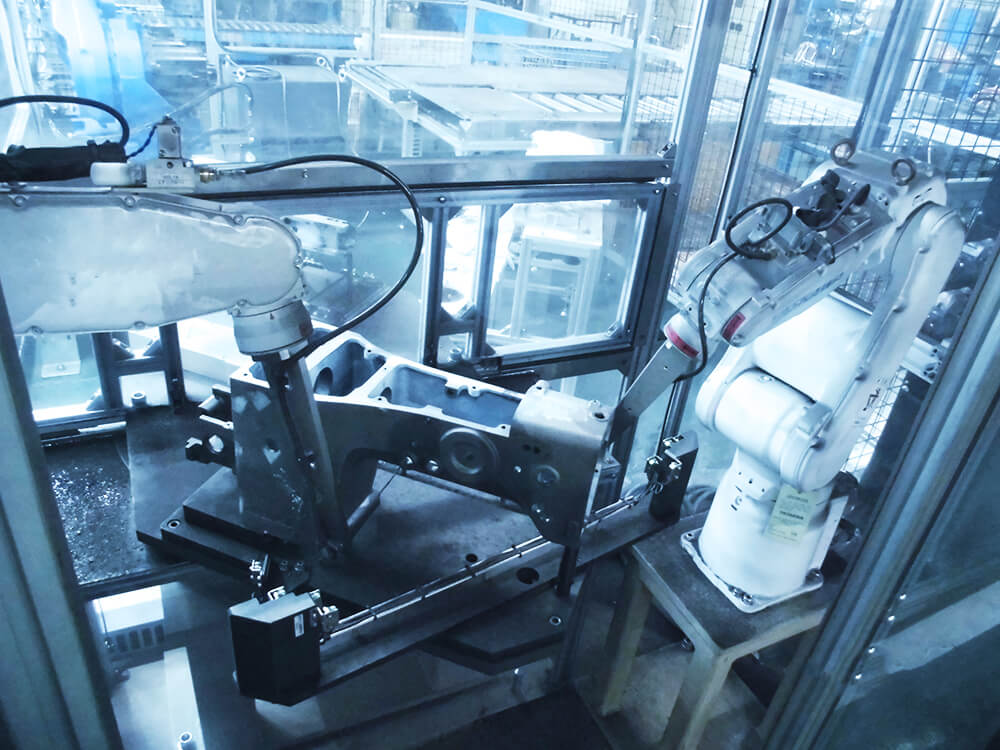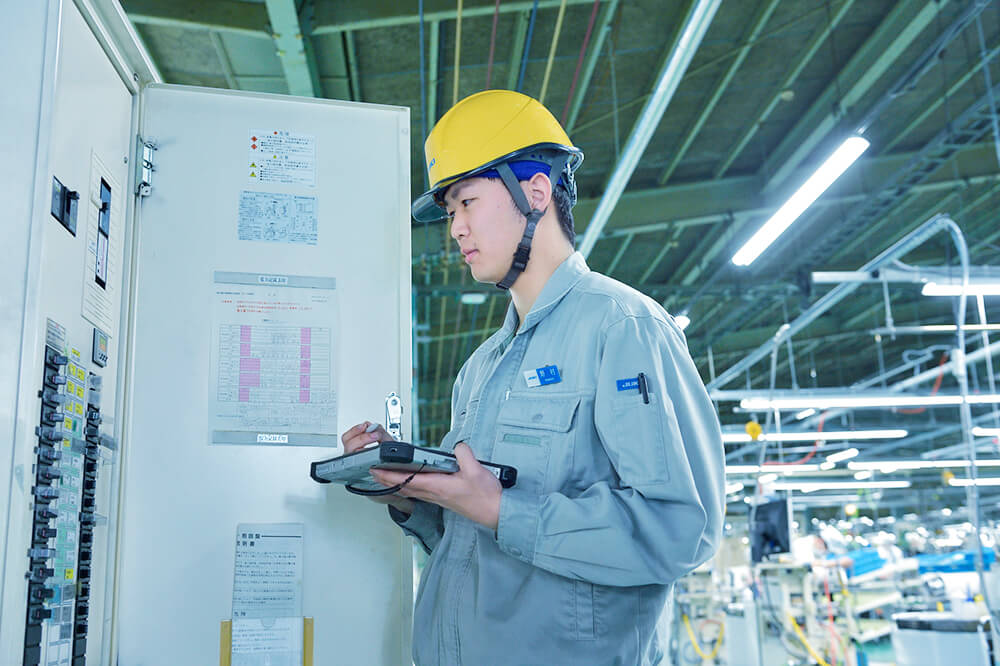“Three” manufacturing capacities that the Ohtawara plant is proud to possess
-
Advanced production engineering and processing technology capacity
-
Thoroughly improved precision assembly capacity
-
Global parts procurement capacity
Building of a smart factory based on “5S, Safe, and QCD.”
The Ohtawara plant is a mother factory of the domestic and overseas group factories that produce industrial sewing machines.
The plant provides ever-evolving production know-how to prepare optimal procedures for the mass production of new products, the building of jigs, and the development of advanced, high-efficiency production systems.
The roles of a mother factory
- We strive to be a model for other operational bases in our policies and day-to-day management activities.
- We study and test new approaches as a factory full of outstanding human resources who can develop the best courses of action and share them with others.
- We develop and launch new products while conducting improvement activities to solve challenges encountered in both theory and theory.
- We raise global human resources who can instruct and improve other operational bases.
[In-house development]
Approaches to making the Ohtawara plant a smart factory through robotization and digitalization
Digital cell production system
Building a digital production system that displays the assembly procedures on tablet screens in every cell. We have established a stable production system by raising the skills of workers in a short time and preventing the incorrect assembly of parts.
Production system using digital cell production
We evolve production based on a “mixed flow system” and “takt system” within the digital cell production process. We develop efficient production systems according to production plans for high-mix, low-volume production, high-volume production, and the like.
System to visualize the progress of production for whole-factory management
Visualizing processes enables us to take immediate actions to solve abnormalities. The tracking of the production progress information of each process as digital data enables the real-time indication of normal and abnormal status. We aim to optimize the timing of the supply of parts and goods in process (just-in-time system) by forging connections to all processes based on the information on each process. Our visualization system visualizes the status of “equipment operation,” “line balance,” and “workers’ work information” to make improvements in each process individually and in daily operations overall.
Use of an Automated Guided Vehicle (AGV)
The vehicle automates transportation tasks in the factory and transports parts, goods in process, finished goods and articles automatically. Our older vehicle served for many years as an autonomous unit. In our new automatic transportation system, the power unit and the carriage connect as separate modules in a new vehicle. The power unit pulls the carriage along. This has enabled us to minimize the money invested.
Visualization of production progress in an assembly process
Our customers can now check an assembly process with a tablet, sending and receiving data through the network to and from the upstream and downstream processes along the line. We built a system that provides products “only when needed,” “only where needed,” and “only in the quantity needed,” by connecting tablets to AGVs.
Use of an arm robot
While the hardware for our arm robot is made by a specialized manufacturer, it operates with software developed by our company. The robot used in our painting process simulates the motions of a human painter. Using the robot to move sewing machine frames and blow away residual chips and shavings improves production efficiency.
Building a tablet-operated system for maintenance work
We have built a repair system using tablet terminals to improve the working efficiency of equipment maintenance operations. Our customers can now do repair work guided and controlled by tablet displays of a full-fledged maintenance database with repair records.





